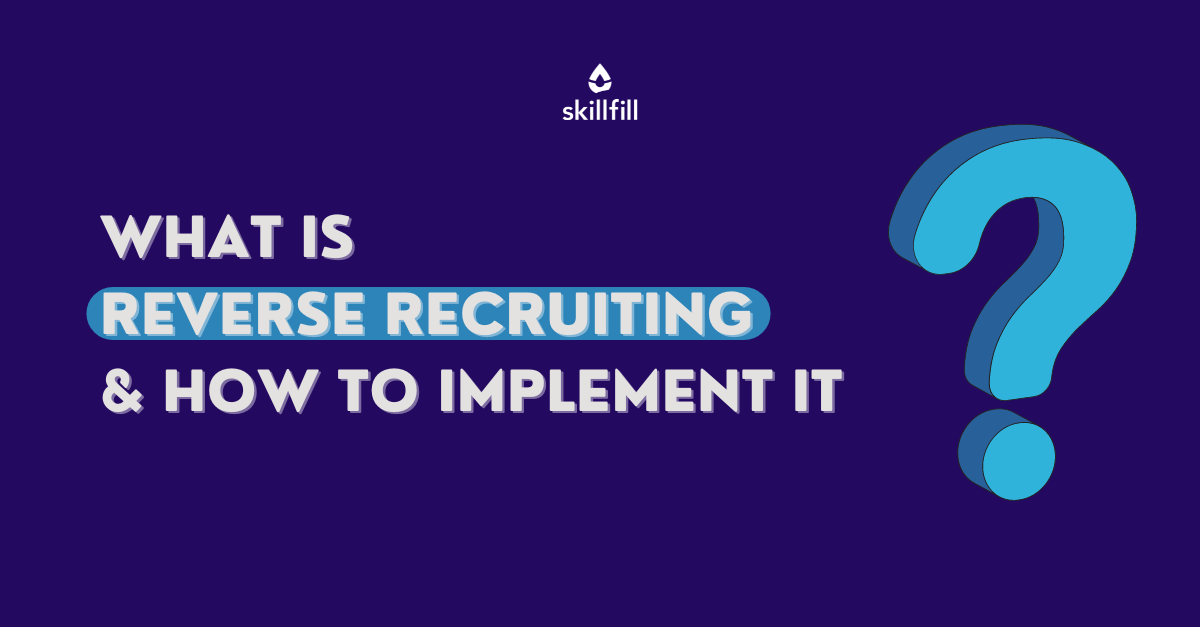Rethinking Employment: Leveraging Reverse Recruiting for Competitive Advantage
Rethinking Employment: Leveraging Reverse Recruiting for Competitive Advantage
Blog Article
Elevate Your Hiring Game With Strategic Reverse Hiring Strategies
As the landscape of hiring evolves, companies are progressively turning to innovative strategies such as calculated reverse recruiting to get an affordable side in securing leading skill. This shift in frame of mind calls for a thoughtful reconsideration of exactly how companies come close to the employing process, focusing on drawing in easy prospects instead than only counting on energetic task candidates - reverse recruiting.
Recognizing Calculated Opposite Hiring
Tactically leveraging the idea of reverse recruiting can considerably improve your company's skill purchase approach. By turning the conventional recruitment technique on its head, reverse recruiting involves proactively looking for and attracting passive prospects who might not be actively seeking new possibilities. This proactive technique allows business to touch into a swimming pool of top quality ability that may not come with traditional work posts alone.
Understanding the ins and outs of strategic reverse recruiting is vital for its effective implementation. It needs a deep understanding of the sector landscape, competitor analysis, and the certain skill sets that are in high need. reverse recruiting. By performing comprehensive research study and leveraging market understandings, companies can identify and engage with top skill in an extra personalized and targeted way

Benefits of Reverse Hiring
Reverse recruiting offers a special technique to ability procurement by proactively engaging with passive candidates who might not be proactively looking for work opportunities. One of the key benefits of reverse recruiting is the ability to target candidates who are already utilized and satisfied in their present functions.

Trick Parts of Reverse Hiring
Having discovered the benefits of reverse recruiting in targeting top entertainers who are material in their current functions, it is crucial to comprehend the vital parts that make this method effective in bring in passive candidates. The initial key element is constructing a strong employer brand name. Easy candidates are typically not proactively looking for brand-new opportunities, so having a positive online reputation as an employer can stimulate their rate of interest. Leveraging social media platforms and employer evaluation websites to display company culture and values can assist in this regard.
Another vital component is customized outreach. Because easy candidates are not actively seeking jobs, generic recruitment messages are likely to be neglected. Customizing outreach initiatives to highlight exactly how the certain abilities and experiences of the candidate line up with the company's needs can considerably increase the chances of obtaining their focus.
In addition, cultivating connections with passive candidates over time is essential. Routinely engaging with them via networking occasions, market conferences, and even periodic check-ins can assist build connection and count on, making them a lot more receptive to potential job chances in the future. By integrating these key parts right into reverse recruiting techniques, companies can check out this site successfully draw in and hire top skill from the pool of easy candidates.
Implementing Reverse Hiring Strategies

Furthermore, creating compelling company branding and showcasing a positive business society can help bring in passive candidates and urge them to consider brand-new job opportunities. Constructing a talent community or skill pipe can also be helpful in supporting relationships with passive candidates gradually, maintaining them engaged and thinking about possible future duties within the organization. In general, carrying out reverse recruiting approaches requires a proactive and individualized strategy to talent acquisition, concentrating on establishing significant links with easy candidates to drive lasting recruitment success.
Measuring Success in Reverse Recruiting
Reliable measurement of success in hiring techniques needs an extensive examination of vital efficiency indicators and metrics to examine the effect and efficiency of talent procurement initiatives. In the context of reverse recruiting, certain More hints metrics can supply important insights right into the efficiency and efficiency of the strategy. One critical metric is the high quality of candidates engaged through reverse recruiting networks. By measuring the conversion rate of easy candidates right into active applicants or employs, companies can assess the effectiveness of their reverse recruiting efforts.
In addition, tracking the time-to-fill statistics for settings filled through reverse recruiting can offer valuable information on the effectiveness of the procedure. A much shorter time-to-fill shows that the strategy is bring in certified prospects without you can find out more delay. Checking retention prices amongst candidates hired with reverse approaches can provide insights into the long-term success of the strategy. High retention rates recommend that the candidates sourced via reverse recruiting are an excellent suitable for the company, contributing favorably to its overall ability pool. By examining these vital metrics, services can effectively gauge the success of their reverse recruiting initiatives and make informed choices to optimize their skill acquisition techniques.
Conclusion
To conclude, strategic reverse recruiting offers an unique method to hiring that focuses on bring in top ability with proactive interaction and relationship-building. By leveraging this technique, organizations can acquire an one-upmanship in the ability market and boost their employment results. It is necessary to comprehend the benefits, crucial components, and techniques of reverse recruiting to successfully apply and measure success in this innovative approach to hiring.
Report this page